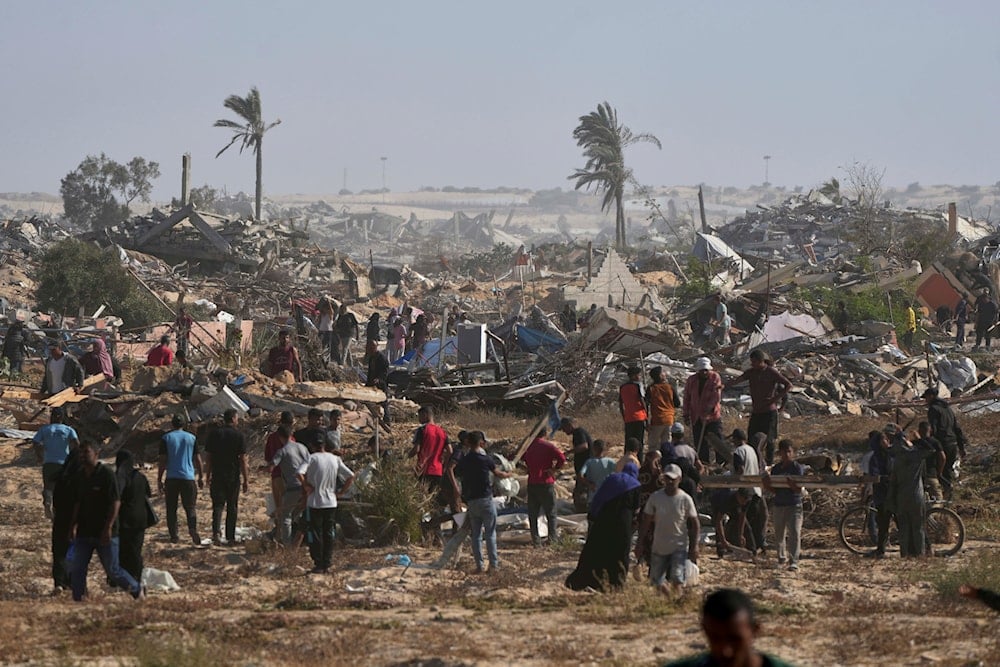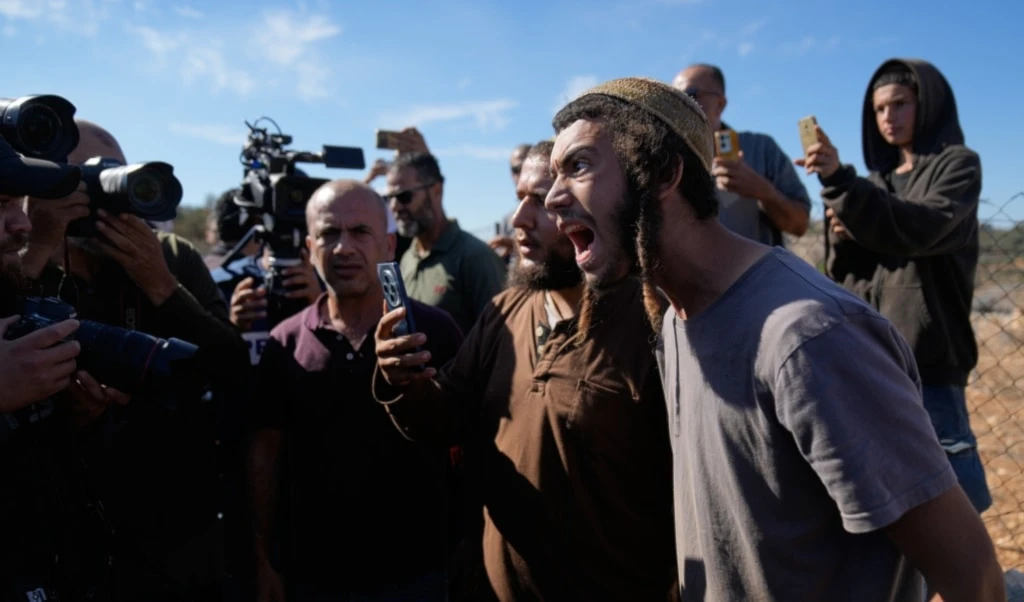'Israel's' Gaza aid model is 'distraction from atrocities': UNRWA
UNRWA’s Philippe Lazzarini criticizes the Israeli-US Gaza aid distribution model as chaotic, undignified, and a distraction from ongoing atrocities in Gaza.
-

Palestinians heading to receive food and humanitarian aid packages from the Gaza Humanitarian Foundation in Rafah, southern Gaza Strip, on May 27, 2025. (AP Photo/Abdel Kareem Hana)
The head of the United Nations agency for Palestinian refugees has strongly criticized the Israeli-backed aid distribution model in Gaza, calling it wasteful, chaotic, and a distraction from the ongoing atrocities in the besieged enclave.
Speaking at the Japan National Press Club in Tokyo on Wednesday, UNRWA Commissioner-General Philippe Lazzarini condemned the Gaza aid initiative led by the Gaza Humanitarian Foundation (GHF), a project supported by "Israel" and the United States.
"The model of aid distribution proposed by Israel does not align with core humanitarian principles," Lazzarini said, in remarks that reflected growing tensions between international aid organizations and the Israeli occupation's approach to humanitarian relief in Gaza.
Thousands of Palestinians rushed to an aid site in the southern city of Rafah on Tuesday, now under Israeli occupation, where the GHF had set up distribution. The site, surrounded by fencing and overseen by Israeli personnel, was met with scenes of desperation as Palestinians pushed against barricades in search of food.
“We have seen yesterday the shocking images of hungry people pushing against fences, desperate for food. It was chaotic, undignified, and unsafe,” Lazzarini said, emphasizing that the aid process must be grounded in neutrality and independence from parties to the conflict.
“I believe it is a waste of resources and a distraction from atrocities,” he added, referring to the continued mass civilian casualties amid "Israel's" ongoing air and ground assault on the Gaza Strip.
UN and aid groups boycott Israeli-US initiative
The United Nations and other humanitarian organizations have refused to participate in the GHF-led effort, citing violations of fundamental humanitarian standards. The model permits screening of aid recipients at designated distribution points, a measure the UN deems incompatible with impartial aid work.
Despite the criticism, US State Department spokesperson Tammy Bruce dismissed the concerns as "complaints about style."
The GHF claims it has distributed roughly 8,000 food boxes, the equivalent of around 462,000 meals, since "Israel" slightly loosened an 11-week blockade on the Gaza Strip last week. However, humanitarian experts argue that these supplies are inadequate and that the delivery system itself fails to meet the urgent needs of the population.
Israeli forces intensified their campaign in Gaza on May 6, and since a short-lived ceasefire collapsed in mid-March, at least 3,901 Palestinians have been killed, according to the Gaza Health Ministry.
US aid site collapses in Gaza
The latest attempt to distribute aid in Rafah by GHF descended into chaos on Tuesday, as the American-managed distribution mechanism built to push people south of the Strip failed catastrophically, an Al Mayadeen correspondent on the ground reported.
The site reportedly collapsed due to overcrowding, disorganization, and a lack of control by the overseeing company, resulting in the destruction of a large portion of the facility. The scenes showed a harrowing sight of people being driven inside overcrowded narrow paths made of metal fences and barbed wire, reminiscent of WW2 nazi concentration camps.
The breakdown was further compounded by live fire from Israeli occupation helicopters, which targeted the vicinity of the distribution center, escalating panic among the gathered civilians. Israeli media outlets, including Yedioth Ahronoth, confirmed that Israeli occupation forces opened heavy fire at Palestinians from Gaza who had stormed the aid complex.
The same outlet also claimed that armed personnel contracted by the American company overseeing the site fled the scene amid the surge in crowds. In response, Israeli commentators criticized the incident as yet another security failure similar to previous breakdowns in the so-called Netzarim axis, pointing to the “privatization of security tasks inside hostile territory by foreign contractors.”

 4 Min Read
4 Min Read










